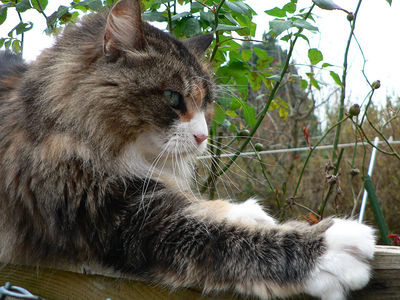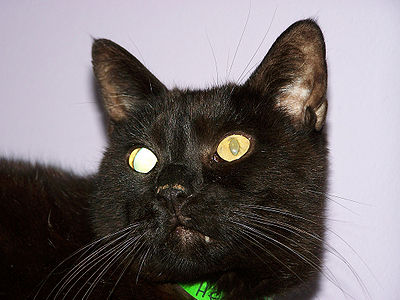
All unborn mammalian babies have a large shunt, a blood vessel that carries blood around the liver instead of through it to the heart. This shunt, called the ductus venous should close down just before or after birth. Sometimes it does not stop working and is a defect known as an intrahepatic (hepatic referring to the liver) shunt.
When an abnormal blood vessel develops outside the liver and remains open even after the venous ductus closes, it is called a congenital liver shunt. Most portosystemic shunts are congenital but, while not common, can be caused by diseases of the liver such as cirrhosis.
Normally, after food is digested, it is absorbed by the blood and carried to the liver where toxins are filtered out. The rest is stored for energy or made into a substance that the body uses such as protein.
In animals with liver shunts, toxins can build up in the blood or kidneys. Signs of liver shunts can be poor muscle development, abnormally small stature, abnormal behavior, seizures, drinking and urinating excessively, diarrhea, vomiting, blindness. Some animals show signs when eating protein or take a long time to recover from anesthesia or sedatives. Signs can be discovered in older pets when a bladder or kidney infection is present. Symptoms usually occur early in the pet’s life, by 6 months old.
Blood tests might confirm diagnosis if there is low blood urea nitrogen (BUN) and albumin, increased liver enzymes, dilute urine or infection. Diagnosis can be made using ultrasound, CT scan, MRI, exploratory surgery, etc.
Treatment involves special diets and medications. Proteins in the diet have to be reduced as they form many toxins in the intestines. Lactulose, (a sugar solution) is given as it discourages toxin-producing bacteria. Antibiotics are administered if a urinary tract infection (UTI) is present.
Miniature Schnauzers, Maltese, Yorkshire Terriers seem to have an increased risk for shunts outside the liver. Large breeds, such as Labrador Retrievers tend to have shunts inside the liver.
If a pet doesn’t respond to medications, surgery can be performed with placing a metal band on the shunt. Inside the band is a ring of casein, a milk protein. Within 3-4 weeks the shunt usually shuts down.
Long-term survival for dogs after surgery is about 85%. Without surgery, survival time can be less than a year for 50%.



